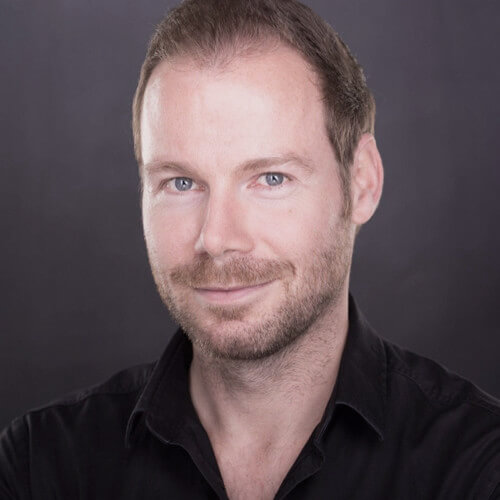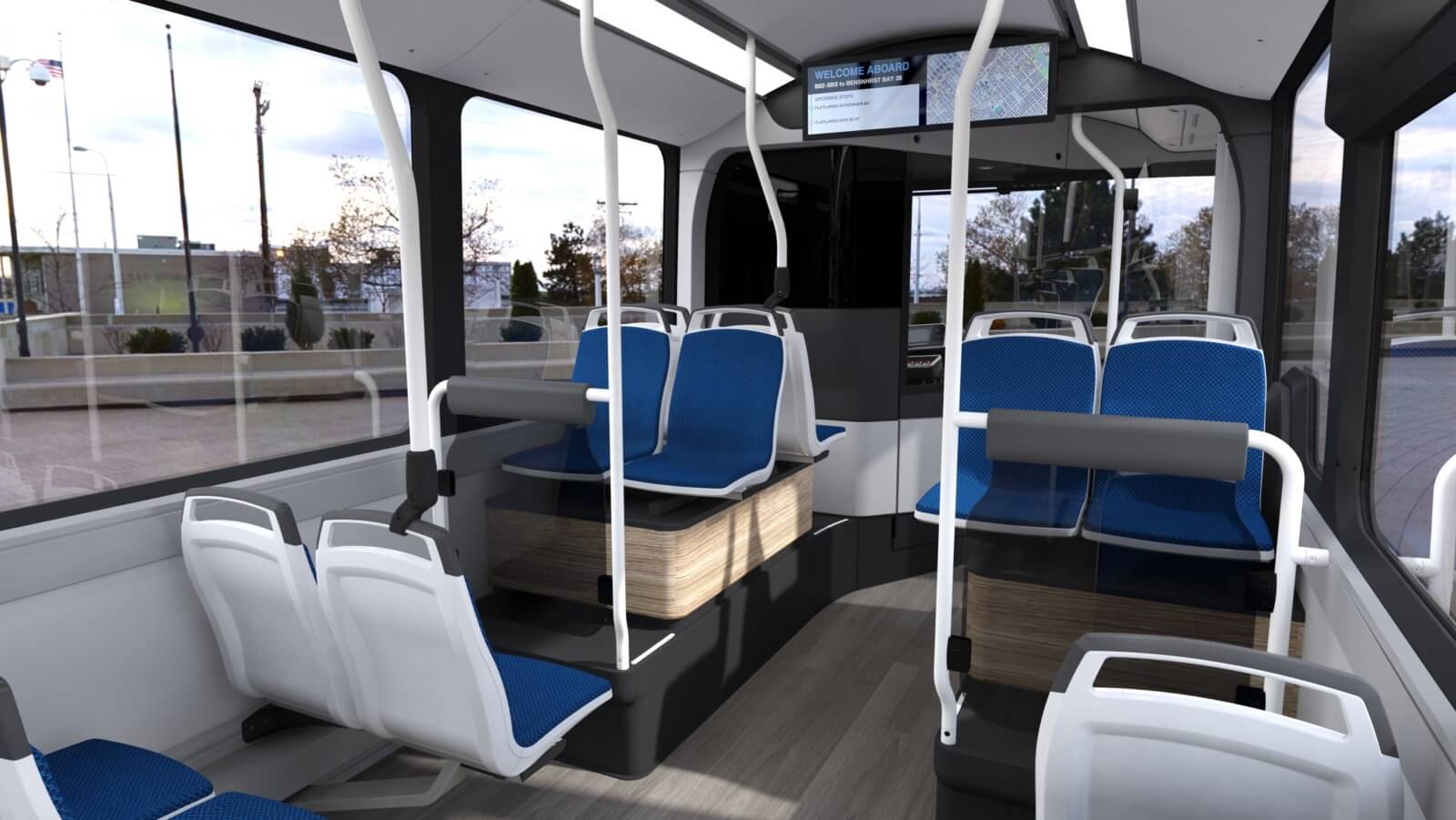Expert interview: Bram Veendrick
As VDL unveils their New Gen Citea, ironically, all we can think about is the awesome legacy of this brand and bus line. Our team actually helped design the first electric Citea back in 2011, creating the design language and form that would be used to continually advance the Citea line — that is, until now.
Armed with their most advanced technology yet, VDL has built upon their legacy of sustainability and innovation to bring the most advanced Citea to market yet. And with our help, give it a totally new design — taking a modern, novel approach to everything from the layout and passenger flow to aerodynamics.
The launch of the New Gen Citea would be considered a feat for any bus brand, but it’s particularly impressive for VDL, a relative newcomer in the industry who hasn’t shied away from pushing the boundaries of engineering and design. Now, we’re sitting down with VDL’s Product Design Manager, Bram Veendrick, to get his insights on the genesis of the design and the process of bringing such an innovative product to market.

The New Gen Citea features all new technology that allowed for a total redesign of this bus. What was your idea for how it would look?
The starting point was definitely that it should be recognizable as a Citea — and that meant this new bus should be an evolution of this line, not a revolution. “We wanted the New Gen Citea to be recognizable, but with a more contemporary approach.” said Bram Veendrick. And that’s what was helpful about working with MODYN, because we defined those lines with them initially. There’s also the advantage that they know us so well. The communication is so good, you only need a word to communicate a certain thing about the product, and they get it. It really helps that they’ve designed this line with us from the get-go.
What was your inspiration for this new bus?
Well, the most important thing we said is that we wanted to match the newfound innovation with quality, contemporary design, and that meant rethinking our approach to some key areas of the bus, like the interior. Our idea for the passenger cabin was to make it feel much more like a public space — like a waiting room — so we took inspiration from interior architecture rather than automotive to create this feel. That led us to design decisions like the shape of the wheel arches, which are square rather than rounded like a wheel. It really gives the cabin an emphasized architectural feeling.

I heard the walls and ceiling were actually a really big discussion between you, MODYN and the engineers.
Yeah, engineering struggled defining not only the shape, but the integration and functionality of that with the ceiling. There’s so much you have to think of here, like airflow and cooling capacity and developing a LED lighting system that fits. But, we saw the value in this element and how it could transform the space, so we took extensive time to optimize this, run simulations, and get it done correctly and create this really clean look. And I think we succeeded with that!
This sounds like just one example of how this project was different from all the other busses MODYN has worked on with you. So in terms of the process, what would you say was different about working with MODYN this time around?
With this new Citea, we had the opportunity to design it from scratch. And from our side, that meant we had to do a lot of research on everything from the layout to the aerodynamics and how we could optimize them. So we did studies on the length and layout and even used wind tunnels to test and set goals for aerodynamics. Then, we used all that as a basis for our design with MODYN. And that was actually really a big challenge for us, to define all new goals and parameters upfront.


So it was about having some parameters, but at the same time, a lot of freedom to think outside of the box and create something new.
Totally. We started with the layout study and then the whole new arrangement of the batteries in the floor — like the electrical drive, what kind of axle is needed, where the weight should be, all those kinds of configurations that are really important. Then from there, it was asking how we could design around that with our inspiration on cityscapes, and interior architecture.
And this was quite an extensive process — a five-year project, in fact. How was it working with MODYN on such a large project over that time?
Like I mentioned before, when working with MODYN, we only have to give them half a briefing and they can already get started and know what we mean and what we want. They also have a really good grasp of what we can do from the engineering side, and that understanding of the technicalities helps them deliver designs that already take into account these demands. MODYN is also really flexible, and they can jump in at any stage of the project to help.
But on a personal note, I think that the whole process was really satisfying, and I enjoyed it a lot. Even when it takes five years, that’s five years that I get to work on such a nice project. And you don’t always get these kinds of opportunities in an organization, or to work with such a great team. So this was a major milestone for me — being responsible for such a big project from the start and getting to work on something so great.
So after all these years, it comes to the last year of finalizing the design, and the world goes into lockdown. How was it completing this project, mostly virtually, amidst Covid?
Covid definitely brought some difficulties, because sometimes you need to go to see the actual prototype. So, in those instances we asked everyone if they were okay and followed the Covid protocols so we could access the vehicle together and finalize the design. But, mostly, it was a lot of video calls. We probably had a zillion of them! All with sketches, renderings, taking over each other’s screens and optimizing the design together, virtually. But I think we all learned that meeting online can be really productive if you have the right tools and communicate.
And speaking of working virtually — VR was actually a big part of this project as well. What was it like utilizing Virtual Reality throughout the design process of the New Gen Citea?
MODYN’s use of VR proved to be a really invaluable technique for us. We utilized it even in the earliest stages to show what the interior would look like without having to complete a mockup. Of course, you can see some things already in renderings, but VR helped us define this totally new interior by testing ideas, shapes, relations and engineering to get a real sense of things.


Now that the bus is complete, I’m curious what you think this bus stands for in terms of the future of mobility.
For me, personally, it’s a major step in getting away from polluting and diesel. We only have an emission-free driveline on this platform. So, the design of this dedicated electric bus has been an opportunity to start from scratch and design a product that lives up to the demands today. And I think we did that really well because it’s also a product that’s ready for the next 10-years. “We’re also building a new factory, so the process for building the New Gen Citea will be totally optimized which is huge. So this new line is really a big step forward for our organization.” said Bram Veendrick
What’s your favorite feature of the New Gen Citea?
I think the driver compartment. We did a lot of extensive work here to meet the demands of the driver and optimize the ergonomics. I think we can be really proud of what we have done here, especially in terms of the HMI (Human Machine Interface), I think we really accelerated in that. But, I also love the exterior lights. You know, the headlights and the rear lights are really defining characteristics of the bus, and we’re really proud to have our own unique design that’s evident of us and our brand.




